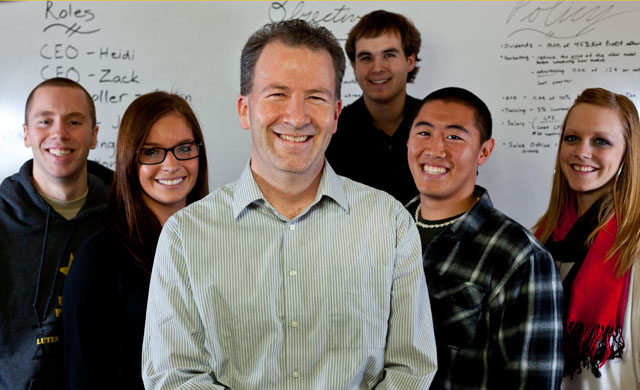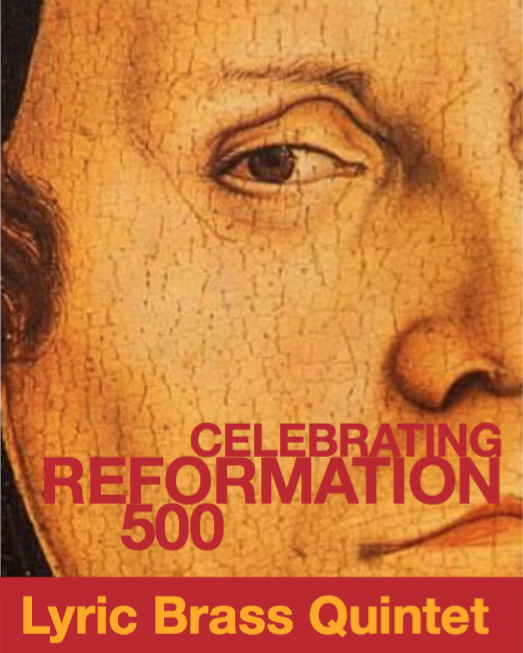Page 7 • (143 results in 0.047 seconds)
-
Originally Published in 2014 When I was a graduate student at the University of Iowa, the classicist and writer Anne Carson came to campus to give a reading and a colloquium. During the colloquium, she was asked how she navigated among the wild variety of…
William Carlos Williams pointed out, a poem is a machine made out of words. In the classroom, then, the poem can be discussed the way machines are discussed, with reference to the technical features that make the machine what it is. To speak of poems in this way, however, requires a scholar’s commitment to studying the genre’s history, its masters, as well as its formal and thematic dynamics. In my poetry-writing courses, it turns out that reading and studying poetry end up taking more time than the
-

Professor Kory Brown and five of the six students who will be competing in the International Collegiate Business Strategy Competition in Long Beach, Calif., this year. Working Together By Steve Hansen On Kory Brown’s office wall there is a small rectangular plaque. He earned it…
example, he cites his work with BluetoothTM standards. That work involves more than 15,000 firms that are members of the Bluetooth Special Interest Group, and about 600 unique individuals who actively contributed knowledge to Bluetooth technology development. Members of these firms actively collaborate to advance Bluetooth technology and then return back to their companies to compete for profits. Brown, in essence, wants to understand these competitive and collaborative dynamics while competitors work
-
Nancy Simpson-Younger sits at her desk, poised to explain how communicating remotely is completely different from speaking face-to-face, when a loud bang sounds from behind her. She laughs. “That was my cat knocking the little whiteboard off the back of the bookshelf.” She considers the…
they’re not like, ‘what are we going to do, I don’t know, I’m just logging on and something will happen.’ Instead, they have this sense of predictability.”She also grouped them together in separate, three-person “pods” to simulate in-person dynamics. “The pods would be the same throughout the semester so that you would get a chance to know people, because usually in class, what I had was ‘work with the people around you.’ I wanted to replicate that somehow because those are the relationships that help
-
The university sponsors Faculty Excellence Awards to recognize outstanding accomplishments of the faculty in five areas of faculty work: teaching, advising, mentoring, research, and service.
notions of identity and prompt students to critically examine history and culture. The transformative impact of her teaching is palpable, as students emerge empowered and equipped with a critical perspective that challenges oppressive dynamics and amplifies marginalized voices.” Emily’s dedication to fostering a supportive community is evident in the words of her students. One student noted, “In our class for heritage speakers, she told us over and over again that even if our Spanish is not ‘academic
-
Major in Mathematics 32 semester hours of mathematics, plus 4 semester hours of supporting courses 32 semester hours of mathematics: MATH 152, 242, 253, 317 or 318 or 319, 331, 433, 455, 499A, 499B 4
152 and four hours from STAT 231, 232, 233, or MATH/STAT 242. MATH 253 (or concurrent enrollment) is strongly recommended. (4) MATH 348 : Statistical Computing and Consulting Topics include qualitative data analysis, as well as the use of R statistical software to create data visualizations and to conduct, present, and interpret statistical analyses such as multiple regression and nonlinear (e.g. logistic) regression. Students will learn about issues that arise when working with real data such as
-

The Lyric Brass Quintet will perform “Luther, Seven Scenes for Brass Quintet” composed by PLU music professor emeritus Jerry Kracht, in commemoration of the 500th anniversary of the Reformation on Sunday, April 23, at 3 p.m. in Lagerquist Concert Hall. “The piece is highly programmatic—that…
is both natural for brass instruments and challenging in terms of endurance, range and dynamics. Audience members will hear loud sounds, soft melodies, traditional tonal harmony, disjunct modern harmony, and everything in between. At 25 minutes long, it is more than twice the length of an average brass piece. PLU Music Professor and Lyric Brass Quintet member Zach Lyman explains that lengthy pieces challenge a musician’s endurance and stamina. “The music changes style and tonality very frequently
-
Native American and Indigenous Studies is an interdisciplinary program grounded in a partnership between students, faculty, staff and local communities, with a global Indigenous focus centered in
courses carefully selected from a variety of Humanities, Social Sciences and Interdisciplinary programs, and works in collaboration with local Indigenous communities and institutions to create a space for Indigenous academic knowledge and inquiry. Students work with each other and with members of Indigenous communities to develop understandings and relationships that can complement a variety of majors. NAIS strives for learning that transcends the boundaries and dynamics of the classroom. Here
-
Senior Physics capstone presentations will take place Monday, May 6th starting at 2pm in Rieke 103B.
. Assorting through various formulae in Python assisted in determining model parameters, their uncertainty, and their reduced χ2 for several variable stars. The reduced χ2 values were quantitative determinants of which models proved significantly the best-fits for the light curves. 2:30pm Jessica Ordaz – “Stars Across the Ages: Investigating Stellar Evolution, Population Dynamics, and Metal Content.” How exactly do astronomers determine the ages and composition of stars? Because of the nature of space
-
Graduation Year: 2013 Location: Santiago, Chile Project Title: Confronting Neoliberalism and Creating Spaces of Transformation through the Chilean Students Movement: FAU “en toma” 2011
experience confirmed that desire. I learned a little bit more about how space is produced and utilized, which is a central concern of geographers. Thinking about the spatial dynamics of an urban social movement gave me the chance to read about how people appropriate space as a way to make societal transformation possible. This is captured in Henri Lefebvre’s idea of the Right to the City, a concept that has been invoked more recently by Don Mitchell and David Harvey, among others. It was invigorating to
-

Did you know that PLU has an observatory ? See how students and professors spent this summer learning about the stars. “Capturing astronomy images is rewarding but can be challenging,” said professor of physics Katrina Hay. “It requires long exposures or stacked images, focusing in…
of physics Katrina Hay. “It requires long exposures or stacked images, focusing in cold dark conditions, climbing a ladder to access the telescope, tracking objects as they move across the sky, and merging several color-filtered images to make a full-color image. Then the physics begins! Our students optimize these skills to capture the best images for use in their investigations- observing dynamics, temperatures, and luminosity of celestial objects,” Hay concluded. Seeing Stars:Dr. O'Neill is
Do you have any feedback for us? If so, feel free to use our Feedback Form.


